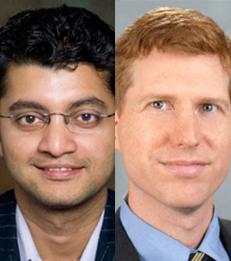Research Highlights
Increased Internet Access Led to a Rise in Racial Hate Crimes in the Early 2000s
—


Instead of engaging in a technological rat race with extremists, we should consider incorporating critical literacies – including digital media, anti-racism and social justice – into school curricula as an alternative strategy. – Anindya Ghose
The incidence of racial hate crimes increased by 20% when a new broadband provider entered an area
New research from Carlson School of Management Professor Jason Chan and NYU Stern Professors Anindya Ghose and Robert Seamans finds that broadband availability increased the incidence of racial hate crimes committed by lone-wolf perpetrators in the United States during the period 2001-2008. The addition of a single broadband provider led to as much as a 20 percent rise in racial hate crimes in areas where racial tensions were especially high.
Their study, the first of its kind to document the relationship between the Internet and hate crimes, sourced data from the Federal Bureau of Investigation, the Federal Communications Commission, the U.S. Census Bureau and the U.S. Bureau of Labor Statistics. According to FBI data, almost two-thirds of reported hate crimes arose from racial bias, making it by far the most typical form of bias-motivated crime in the U.S.
Using a large-scale data set from 2001-2008, the authors show:
“The positive relationship between broadband providers and the number of hate crimes is mainly found in places that have high levels of racism,” says Professor Chan. “The likely reason behind this is the Internet facilitates this specialization of interest. That is to say users will search out content online that is congruent to their beliefs or preferences and are not as likely to look up content that is counter to what they believe in.”
The article, “The Internet and Racial Hate Crime: Offline Spillovers from Online Access,” is forthcoming in MIS Quarterly. Visit YouTube to watch a video on the research and its implications.
___
Anindya Ghose is the Director of the Center for Business Analytics and Professor of Information, Operations, and Management Sciences and Professor of Marketing. Robert Seamans is Associate Professor of Management and Organizations.
Their study, the first of its kind to document the relationship between the Internet and hate crimes, sourced data from the Federal Bureau of Investigation, the Federal Communications Commission, the U.S. Census Bureau and the U.S. Bureau of Labor Statistics. According to FBI data, almost two-thirds of reported hate crimes arose from racial bias, making it by far the most typical form of bias-motivated crime in the U.S.
Using a large-scale data set from 2001-2008, the authors show:
- An increase in the number of broadband providers led to an increase in racial hate crimes, particularly among lone-wolf perpetrators.
- The addition of one broadband provider in every county in the U.S. would have caused 865 additional incidences of racially driven crimes on an annual basis.
- Yet the Internet’s impact on hate crime was not uniform and was predominantly present in areas with higher levels of racism, identified by the amount of racial segregation present and the proportion of racially charged search terms used.
- Greater Internet access did not cause an increase in the formation of off-line hate groups. However, it may have enhanced the efficiency with which extremists could spread hate ideology and spur like-minded individuals to carry out lone-wolf attacks.
“The positive relationship between broadband providers and the number of hate crimes is mainly found in places that have high levels of racism,” says Professor Chan. “The likely reason behind this is the Internet facilitates this specialization of interest. That is to say users will search out content online that is congruent to their beliefs or preferences and are not as likely to look up content that is counter to what they believe in.”
The article, “The Internet and Racial Hate Crime: Offline Spillovers from Online Access,” is forthcoming in MIS Quarterly. Visit YouTube to watch a video on the research and its implications.
___
Anindya Ghose is the Director of the Center for Business Analytics and Professor of Information, Operations, and Management Sciences and Professor of Marketing. Robert Seamans is Associate Professor of Management and Organizations.
